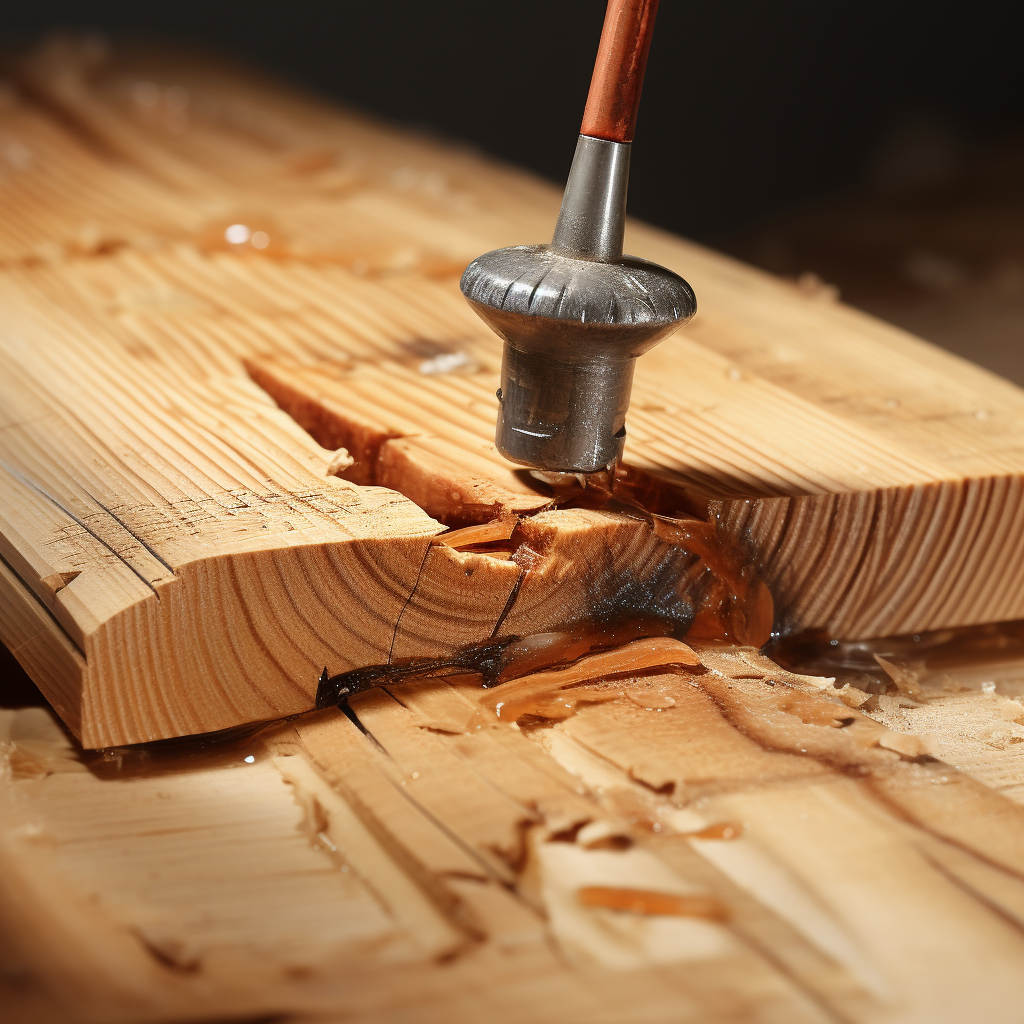If you are wondering how to fix split wood from screw, then you’ve come to the right place.
With the right tools and a bit of know-how, you can fix it yourself.
We’ll guide you step-by-step through the repair process and even show you how to prevent it from happening again. Don’t let split wood ruin your day.
Arm yourself with this practical guide and get ready to tackle that split like a pro!
Key Takeaways
- Screw selection and quality play a significant role in preventing wood splitting.
- Using high-quality wood filler and suitable screw selection are essential for repairing split wood.
- Applying wood glue, clamping the split pieces, and using wood filler are crucial steps in fixing split wood.
- Preventive measures such as efficient wood seasoning techniques and controlled humidity levels can help prevent wood splitting.
Understanding Why Wood Splits From Screws
You’re likely wondering why wood splits when you’re screwing into it, and that’s what we’re discussing right now.
The main culprits are screw selection and the wood material characteristics.
You see, not all screws are created equal. Some are more aggressive in design, causing more stress on the wood fibers, leading to splits.
So, selecting the right screw is vital to prevent splitting.
On the other hand, the type of wood matters. Hardwoods like oak are less likely to split than softwoods like pine.
The condition of the wood plays a part too. Dry wood tends to split more easily than fresh.
Understanding these factors can greatly reduce your chances of splitting wood when screwing into it.
Tools Needed to Repair Split Wood
Before jumping into the repair process, it’s crucial that at this stage you’ve got all the necessary tools to fix the split wood. Understand that your screw selection impact can either worsen or improve the situation. The right screw ensures tightness, prevents further splitting, and promotes longevity.
You’ll need:
- A high-quality wood filler: It’s essential for filling the split and creating a smooth, unnoticeable repair.
- A suitable screw: The screw selection impact is significant. A smaller, less aggressive screw could prevent additional damage.
- A wood conditioner: The wood conditioning importance can’t be underestimated. It prepares the wood to accept the filler evenly, preventing patchy repairs.
Armed with these, you’re well on your way to mending that split wood effectively. Your wood’s health depends on your choices, so choose wisely!
Step-by-Step Guide to Fixing Split Wood
Start by applying wood glue to the split pieces, ensuring a generous amount is used for a secure hold. After you’ve glued the pieces, clamp them together and let it dry.
Next, comes the filler compounds application step. Use a putty knife to apply the wood filler into the split, smoothing it out to match the wood’s surface. Allow it to dry.
Once dry, use your screws to further secure the wood, taking care to avoid the split.
Lastly, sand the area for a smooth finish.
With patience and care, you’ll have your wood looking as good as new.
Preventive Measures for Wood Splitting
In addition to fixing split wood, it’s also essential that you understand and implement preventive measures, such as proper wood seasoning and controlled humidity, to avoid wood splitting in the first place. You don’t want to constantly mend split wood, so prevention is key.
To keep your wood in top condition, here are some practical tips:
- Learn efficient wood seasoning techniques: Seasoning reduces moisture in wood, making it less likely to split. Use kilns or air drying, depending on your needs and resources.
- Implement controlled humidity: Keeping your storage environment’s humidity levels between 50-60% can significantly reduce splitting.
- Heed lumber selection tips: Choose quality lumber with fewer knots, as these are weak points that may lead to splitting.
Real-Life Examples and Solutions for Split Wood
You’ve probably encountered a few instances of split wood in your home, but let’s focus on three common real-life examples and their corresponding solutions. Different wood types react differently to screws, so it’s essential to choose the right solution for each instance.
| Split Wood Scenario | Solution | Evaluation of Wood Glue Effectiveness |
|---|---|---|
| Hardwood split by a screw | Use wood glue and clamps | Effective for bonding hardwood splits |
| Softwood split near the edge | Apply wood glue and use a wood filler | Partially effective; wood filler enhances stability |
| Plywood split due to excessive force | Apply ample wood glue and clamps | Highly effective, plywood absorbs glue well |

Leave a Reply